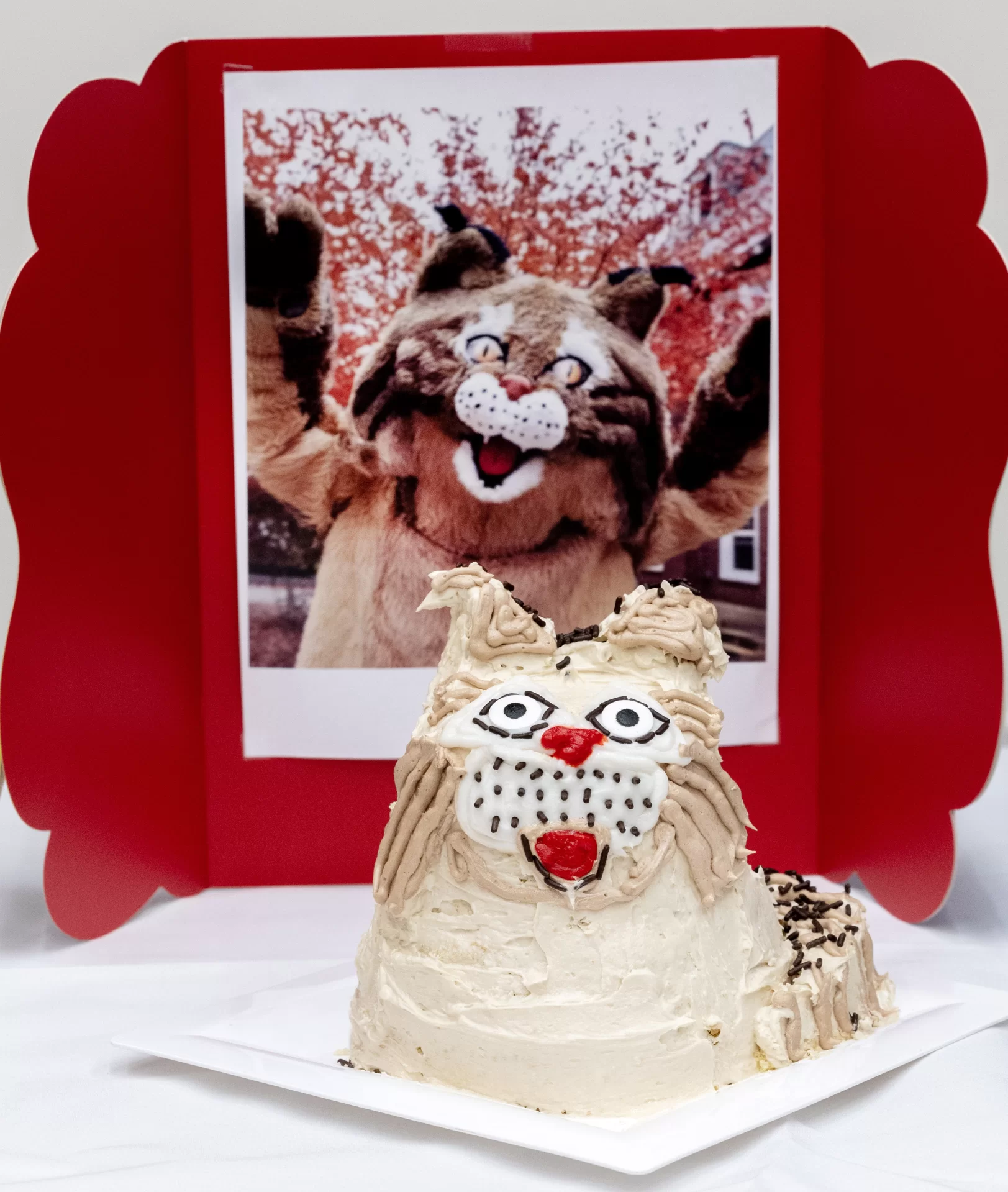
As often happens when food and community blend together, the result is greater than its ingredients. Such was the case at the third annual Edible Books Festival, held on the first floor of Ladd Library on April 12.
“The baking was memorable, but coming together with everyone, trying everyone’s different creations and just seeing how everyone interprets different books was a great experience — a celebration overall,” said Isabelle Job ’24 of Wenham, Mass.
(Theophil Syslo/Bates College)
She and Jaden Witte-Schrock ’24 of Niwot, Colo., were part of a student team that created a cake inspired by Chekov. “I loved everyone coming together: staff, students, and professors,” said Witte-Schrock. “I really enjoyed that.”
In terms of its name, the Edible Books Festival doesn’t mince words: It invites the Bates community to bake and cook dishes that play off the title or theme of a well-known book.
This year’s event drew 11 entries. Cheryl Lacey, director of Bates Dining Services, has been a judge each year. “The creativity this year was off the charts, and there were some hilarious puns.”
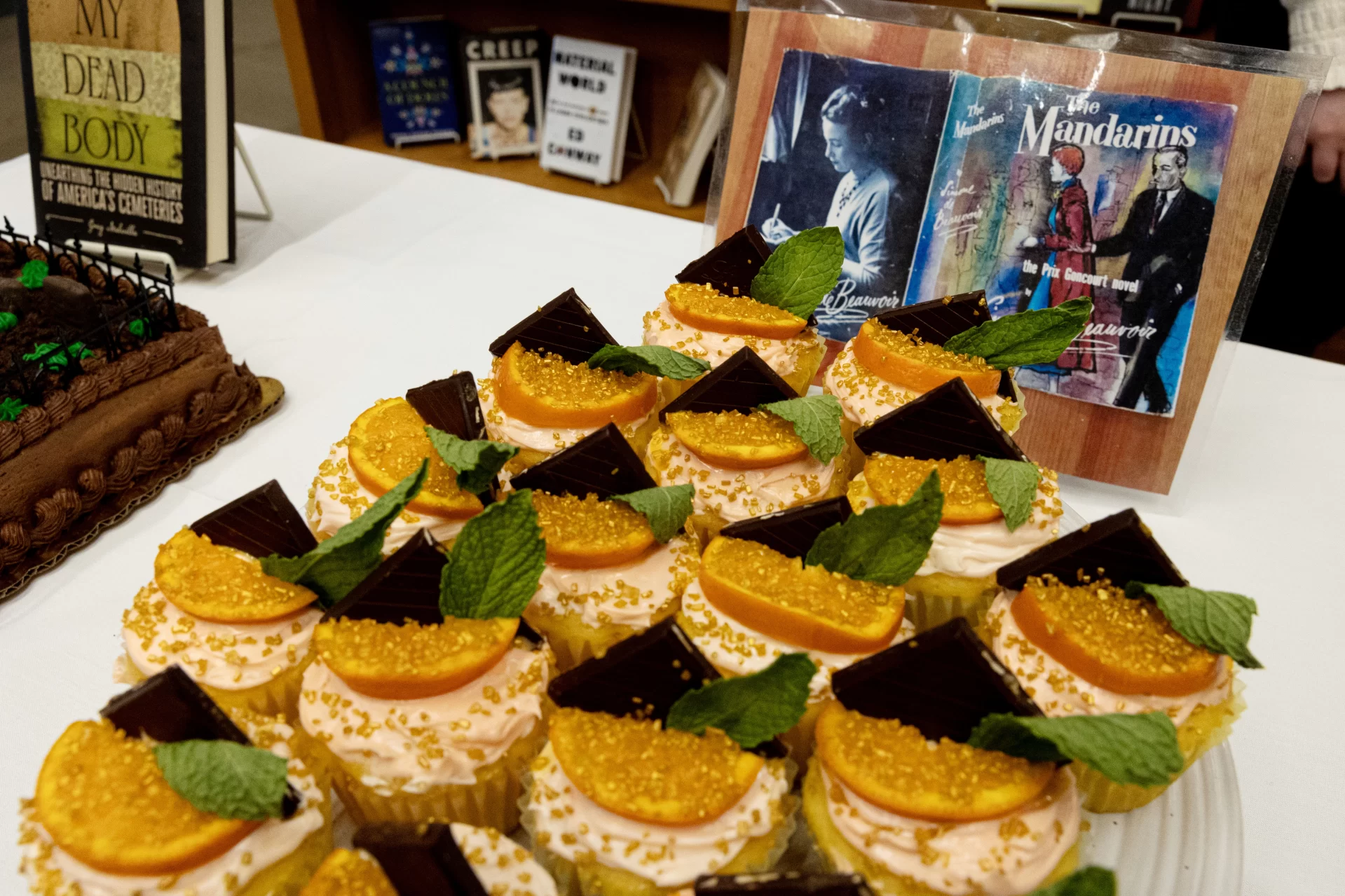
Here are three:
- “Lemony Crickets: A Series of Unfortunate Desserts,” inspired by Lemony Snicket’s A Series of Unfortunate Events, created by festival organizer Hannah Dawkins, a library assistant in access services.
- “A Pear for Owen Cremini,” inspired by John Iriving’s A Prayer for Owen Meany, created by Grey McGloon, also a library assistant in access services.
- “Tropical Can of Corn,” inspired by Henry Miller’s Tropic of Capricorn, created by Christine Murray, social science librarian.
This year’s festival drew students from three language courses, including a seminar course taught by Lecturer in Japanese Keiko Konoeda, who created a dish based on their work exploring topics in Japanese literature and food.
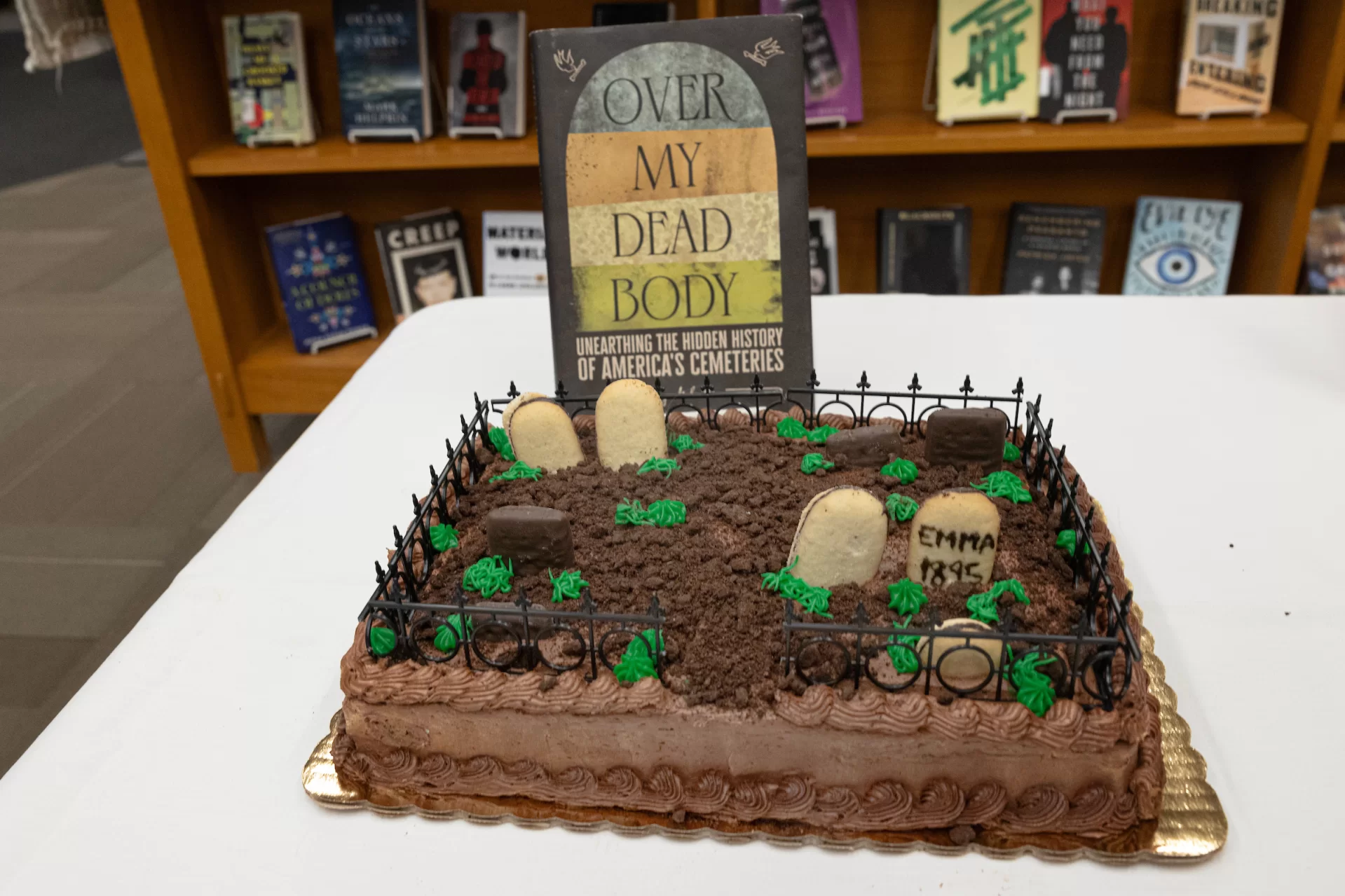
Konoeda suggested that her students participate as a group activity, and that appealed to Ellie Asada ’26, an economics major and Japanese minor from Honolulu. “We were reading poems and children’s books at the time, and this seemed like a perfect way to bond.”
The class drew inspiration from a Japanese children’s picture book based on a poem by Shuntaro Tanikawa, “They Have Died for Me,” which the students translated into English.
“The book is a poem about how animals — beef, fish, and pigs — have died for us, becoming food on our plates,” said Foy Ma ’25 of Beijing, a double major in philosophy and mathematics with a Japanese minor. “It’s a reminder to live gratefully.”
“The poem tells a universal message not specific to Japan,” Konoeda said. “But some may say the spirit of gratitude for the animals that give up their lives is culturally particular”: viewing humans and animals in life together, “unlike seeing humans having dominion over other creatures.”
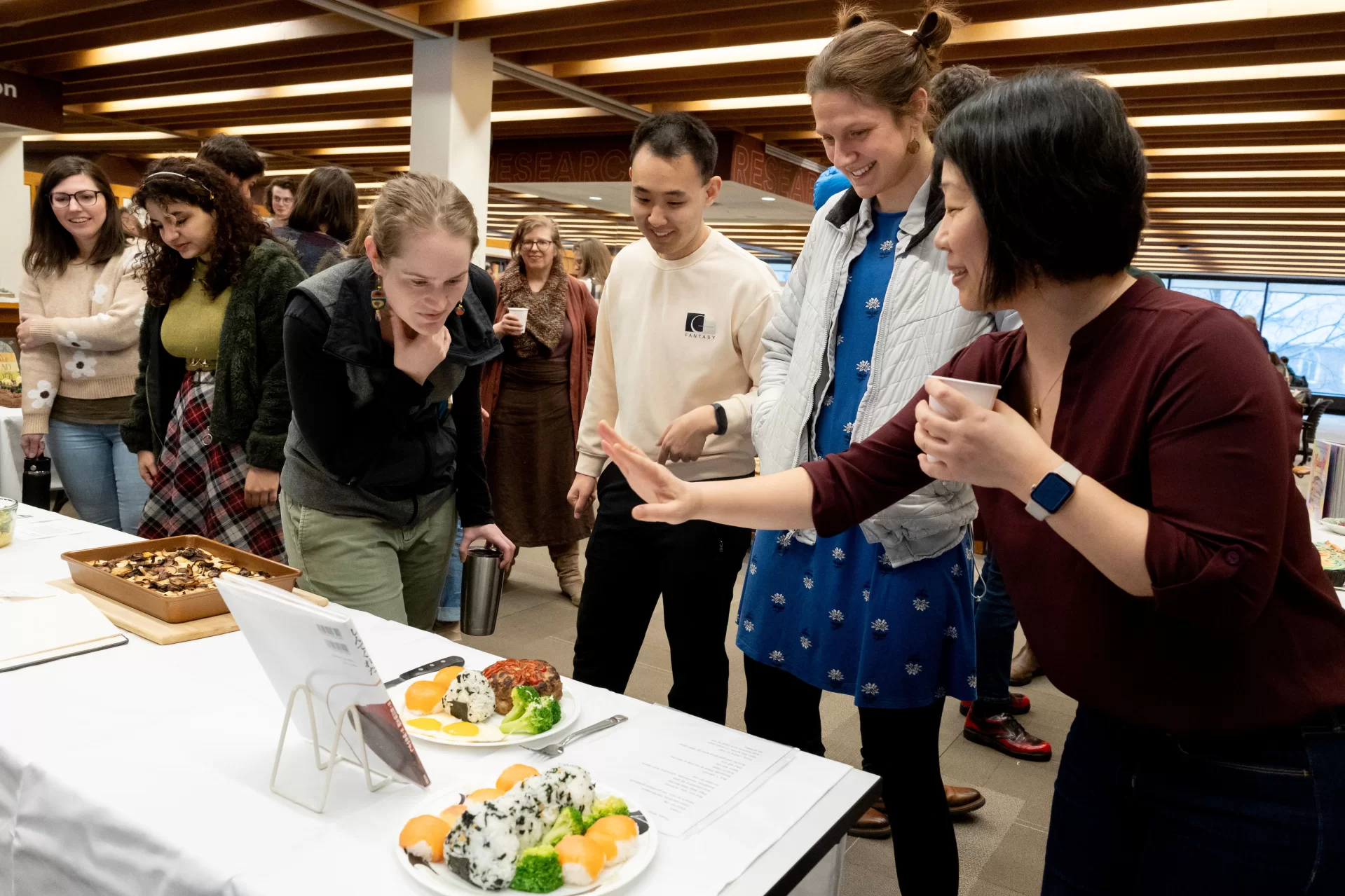
The dish imitated the dish on the cover of the picture book, including a hamburger patty (“a very common “Western food” dish in Japan,” said Konoeda), atop which the class used ketchup to draw a picture of a cow, plus fried eggs, salmon sushi, and a rice ball.
From students in the German course “Adaptation,” taught by Associate Professor of German Raluca Cernahoschi, came a gingerbread based on the Heidi novels.
Cernahoschi and her students spent the semester studying how various cultural products — books, movies, etc. — get adapted and reinvented for different cultural purposes, like a novel turned into a film or, for the Edible Books Festival, a Swiss children’s novel turned into a gingerbread house.
“One of the things we studied in the course is how even simple-seeming decisions related to Heidi products have a lot of implications,” said Cernahoschi.
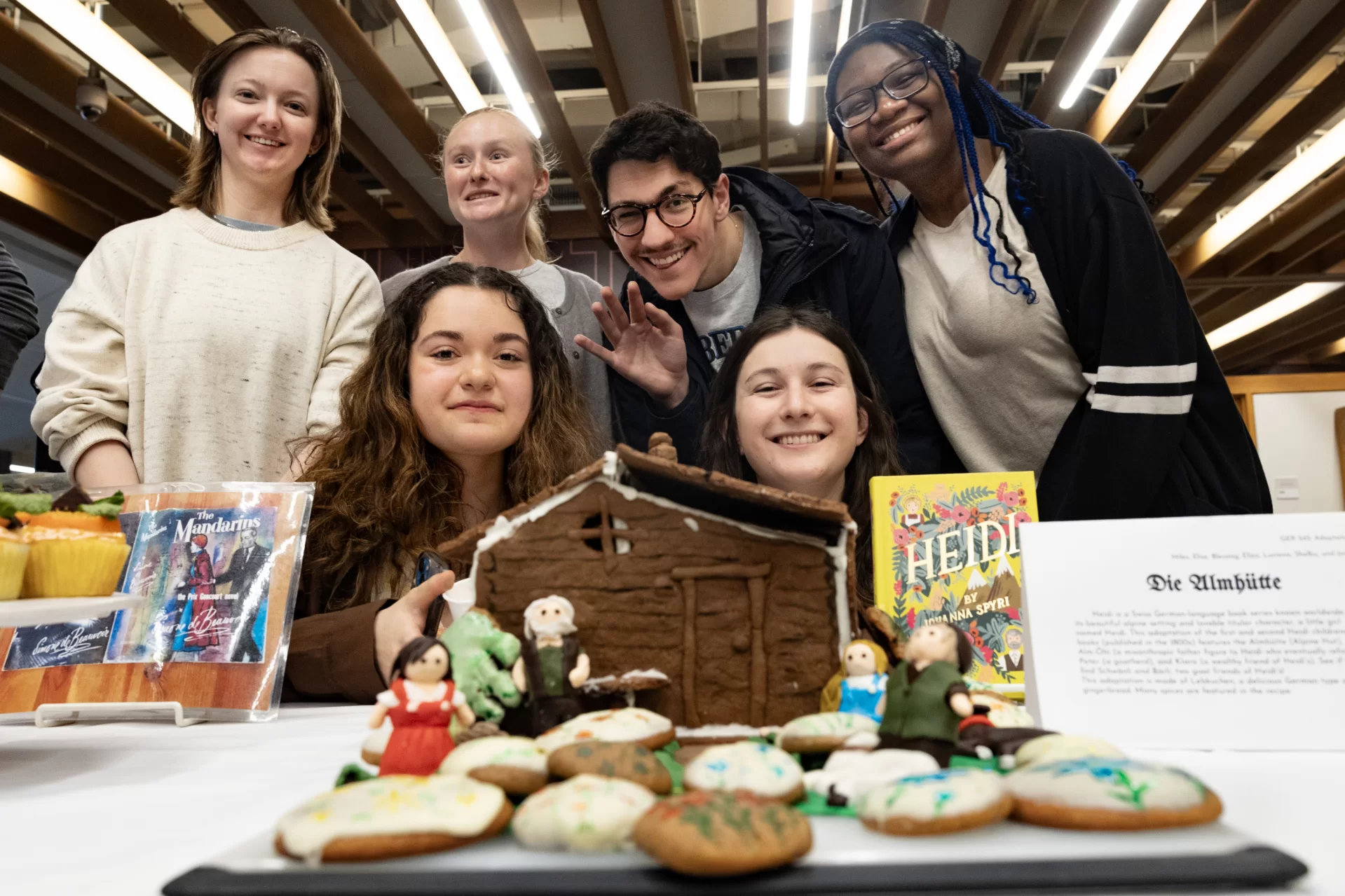
“This is a lesson in cultural adaptation but also in design,” she added. “As the students considered how to turn Heidi into something edible, they had to grapple with a series of such questions. How can words on a page be translated into food on a plate? What can they expect their audience to know about Heidi and respond to? How can the cultural specificity of the novels, 19th-century Switzerland, be transposed to a 21st-century Maine environment?”
Isabelle Job, Jaden Witte-Schrock, and classmates from their advanced Russian course, taught by Visiting Lecturer in Russian Cheryl Stephenson, created an entry based on Anton Chekhov’s Uncle Vanya.
“We made a cake that has a tea blend in it with lemon, rose, lavender, and vanilla, and each of those flavors are associated with a character,” said Job, who is an art and visual culture major with a Russian minor. “And then we put motifs on top with the frosting, and so they all kind of corresponded with each other.”
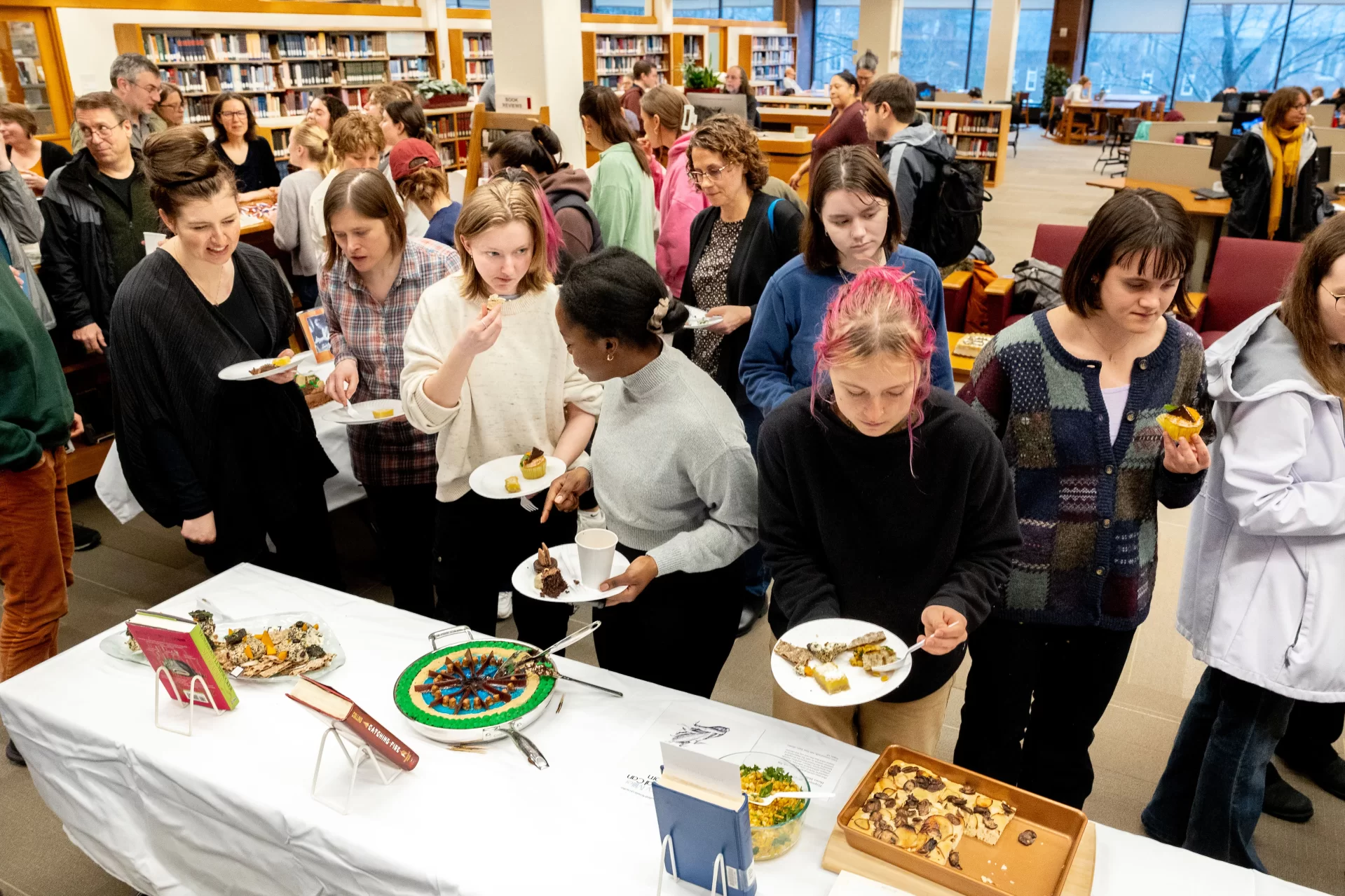
Witte-Schrock, who is an economics major and Russian minor, said that infusing the cake — which earned the “most-creative” prize — with tea flavors was highly intentional: He and Job are officers of the Bates Tea Club. “It was really fun playing with these different flavors. It also felt timely and bright with it being spring and us having flower motifs.”
“My favorite part?” responded Foy Ma when asked the question. “It’s not actually making the food. It’s actually enjoying everyone else’s food! People are really creative and they’re really talented.”
